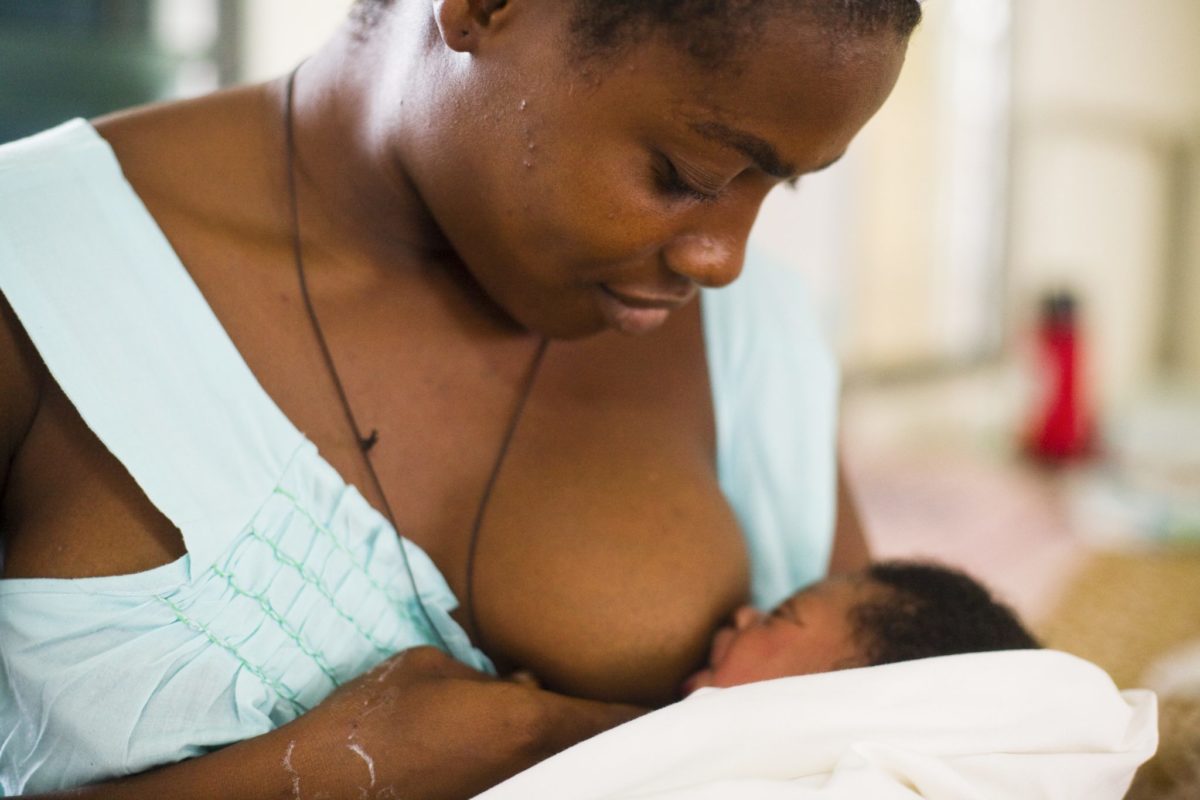5 Things You Need to Know About Breastfeeding and HIV

Globally, over 36 million people are living with HIV and almost 2 million of these cases are children under the age of 15. Although far too many people are living with HIV globally, there has been remarkable progress in reducing new infections – particularly in preventing mother-to-child transmission. Between 2010 and 2017, the number of new infections among children under 5 declined by 35 percent and AIDS-related deaths among young children declined by nearly half.
Despite this noteworthy progress, there are still misconceptions about a woman’s ability to breastfeed if she is HIV positive. Mothers who are on consistent antiretroviral treatment (ARV) throughout the breastfeeding period have an extremely low risk of transmitting HIV to their babies. Supporting an HIV-positive woman’s ability to breastfeed through ARV treatment and lactation counseling gives children the lifesaving benefits of breastmilk. It also dually improves the woman’s own health by conferring the maternal health benefits of breastfeeding (such as reduced risk of certain cancers) and improving her health through ARV treatment. By strengthening support for HIV treatment and breastfeeding, we can improve survival and health for both mothers and children.
Note: The facts below are based on the recently published “Breastfeeding and HIV” Advocacy Brief. For more resources, check out the Global Breastfeeding Collective, led by UNICEF and WHO.
Here are 5 things you need to know about breastfeeding and HIV:
- Breastfeeding is the safest, most nutritious option for babies.
Breastmilk is always the right temperature, requires no preparation and is readily available even in settings with limited access to clean water and adequate hygiene. Breastfeeding promotes cognitive development and acts as a child’s first vaccine, giving babies everywhere a critical boost. - Breastfeeding is a life-saving intervention.
Breastmilk contains antibodies and other components that protect children against deadly infections. In some contexts, when there may be limited or no access to clean water and hygienic conditions, breastfeeding can drastically reduce the risk of diarrhea and other deadly diseases. - Breastfeeding mothers need (even more!) support when following an HIV treatment regimen alongside breastfeeding safely.
With adequate support from their families, communities, health workers and society, almost all mothers can breastfeed, even in the harshest contexts. Support for breastfeeding must be free from commercial influences and must include counseling provided within health facilities and at the community level to guide mothers through breastfeeding with HIV safely. - HIV testing, treatment and support should be provided as part of the care women receive before, during and after pregnancy.
This support should be provided confidentially and without judgement. It should also be affordable and accessible for all families. - Preventing mother-to-child transmission of HIV is a public health priority.
Adequate services and support can help women protect themselves from being infected with HIV before and during pregnancy and throughout the breastfeeding period.
The life-saving protection of breastfeeding is critical to children surviving and thriving around the world. Particularly in settings where malnutrition is widespread, breastfeeding guarantees a safe, nutritious and accessible food source for infants and young children and a protective shield against death and disease. But breastfeeding requires immense support from families, communities and societies, and by strengthening support for the treatment of HIV and breastfeeding, we can improve survival and health for both mothers and children globally.
